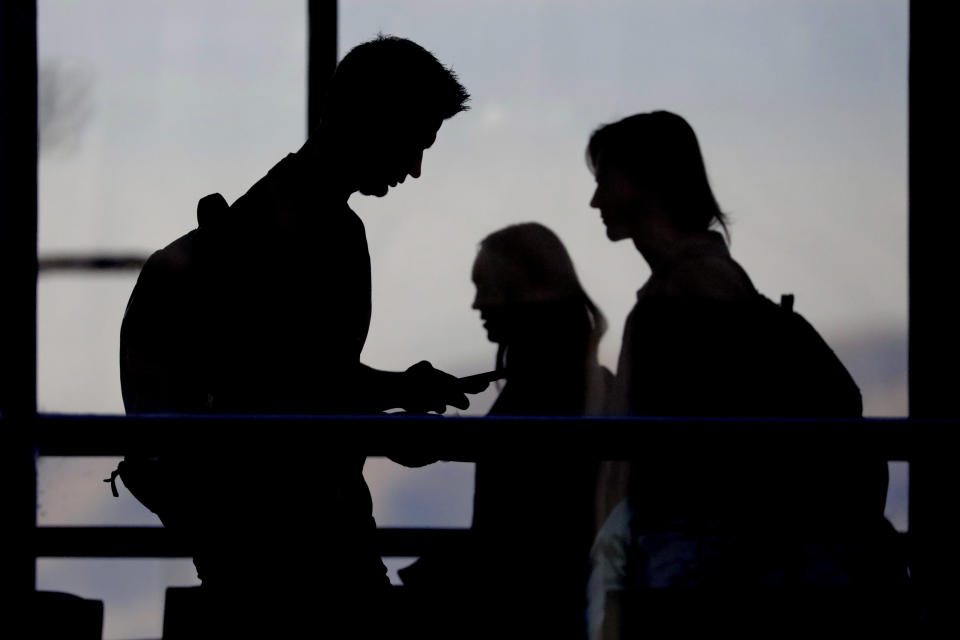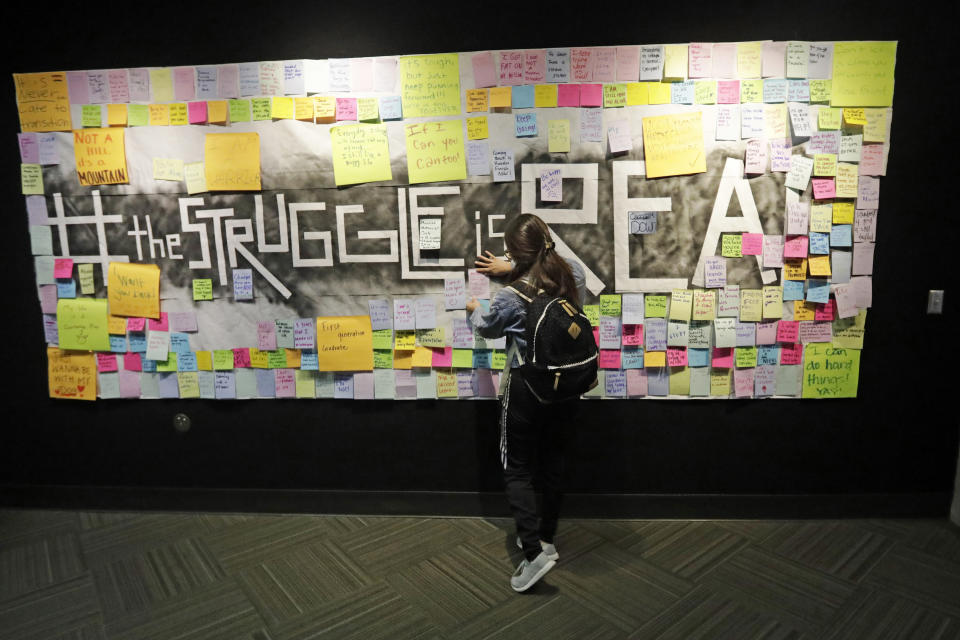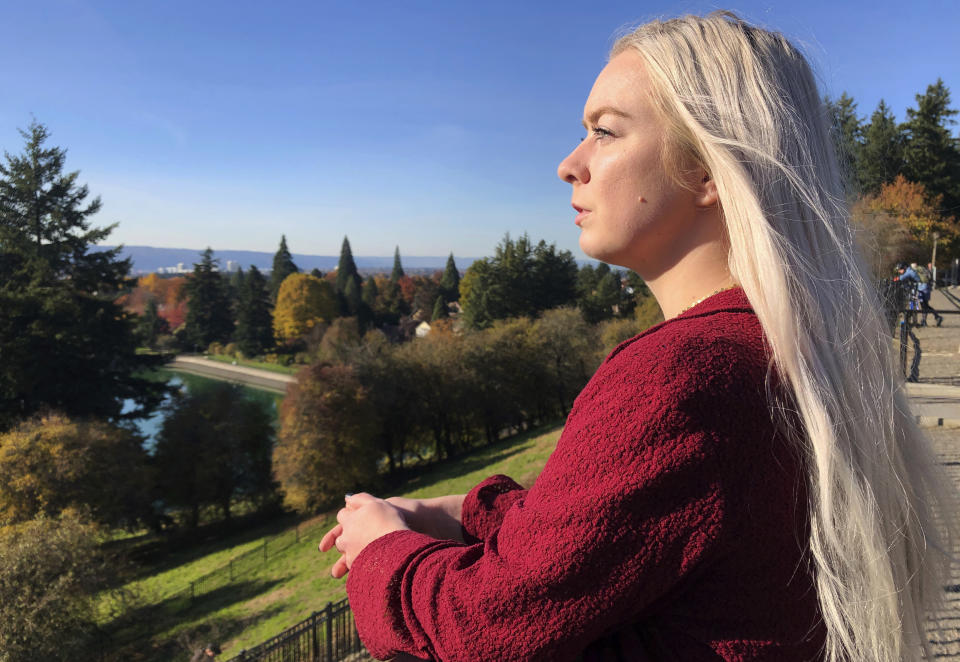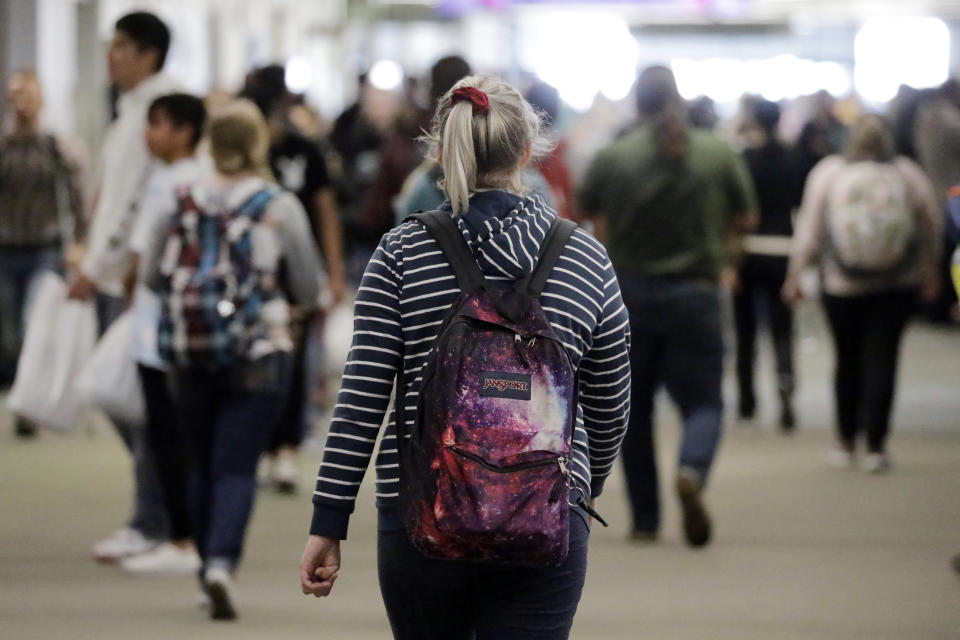More college students look for mental health help on campus
More college students are turning to their schools for help with anxiety, depression and other mental health problems, and many must wait weeks for treatment or find help elsewhere as campus clinics struggle to meet demand, an Associated Press review of more than three dozen public universities found.
On some campuses, the number of students seeking treatment has nearly doubled over the last five years while overall enrollment has remained relatively flat. The increase has been tied to reduced stigma around mental health, along with rising rates of depression and other disorders. Universities have expanded their mental health clinics, but the growth is often slow, and demand keeps surging.
Long waits have provoked protests at schools from Maryland to California, in some cases following student suicides. Meanwhile, campus counseling centers grapple with low morale and high burnout as staff members face increasingly heavy workloads.
“It’s an incredible struggle, to be honest,” said Jamie Davidson, associate vice president for student wellness at the University of Nevada, Las Vegas, which has 11 licensed counselors for 30,000 students. “It’s stressful on our staff and our resources. We’ve increased it, but you’re never going to talk to anyone in the mental health field who tells you we have sufficient resources.”
The Associated Press requested five years of data from the largest public university in each state. A total of 39 provided annual statistics from their counseling clinics or health centers. The remaining 11 said they did not have complete records or had not provided records five months after they were requested.
The data shows that most universities are working to scale up their services, but many are far outpaced by demand.
Since 2014, the number of students receiving mental health treatment at those schools has grown by 35%, while total enrollment grew just 5%. By last year, nearly 1 in 10 students were coming for help, but the number of licensed counselors changed little, from an average of 16 to 19 over five years.
On some campuses, that amounts to one counselor for every 4,000 students, including at Utah Valley University. An industry accrediting group suggests a minimum of one counselor per 1,500 students, but few of the 39 universities met that benchmark.
When Ashtyn Aure checked in at the mental health clinic at Utah Valley last year, she was suffering anxiety attacks and had not slept for days. Her mind kept returning to past traumas. When she asked to see a counselor, a staff member told her the wait list stretched for months. She left without getting help.
“I was so obviously distressed, and that was the place I was supposed to go. What do you do after that? Do you go to the hospital? Do you phone a friend?” said Aure, 25, who graduated this year.
Ultimately, she turned to her church, which helped her find therapy at an outside clinic. “If it wasn’t for that,” she said, “I don’t know.”
Officials at Utah Valley said they are working to avoid such cases. If staff know a student is in crisis, they said, a counselor can see that person in a matter of minutes. But staff members have only a few moments to make an assessment.
“Unfortunately, stories like this are not that uncommon,” said Dr. William Erb, senior director of student health services at Utah Valley. “We train, review and revise these procedures so that situations like this can be avoided as much as possible.”
At most universities, students contemplating suicide or otherwise in crisis are offered help right away. Others are asked to schedule an appointment. For cases that are not urgent, the wait can range from hours to months, depending on the time of year and the design of the clinic.
Many schools that provided data to the AP said it takes weeks to get an initial appointment. At Utah Valley, students waited an average of more than four weeks last year. At the University of Washington at Seattle, it was three weeks. During busy times at Louisiana State, wait times stretched to four or five weeks.
Some other schools have adopted a model that provides screenings the same day students ask for help, but it can take weeks to get further treatment.
To some students, waiting is just an inconvenience. But it raises the risk that some young people will forgo help entirely, potentially allowing their problems to snowball.
Students at Brigham Young University drew attention to delays last year after a student took her own life on campus. Days after the suicide, an anonymous letter was posted at the counseling center describing the dilemma some students face.
“I have a therapist on campus, and he is wonderful and well qualified. But I only see him once a month. Because he has too many clients to see in one week,” the letter said. “It is the story of many of us barely getting by here at BYU. If I died would anything change?”
Students at the University of Maryland called for change last year after some on campus said they had to wait 30 days or more for an initial appointment. Organizers called the campaign “30 Days Too Late.”
“We quickly realized that there were a lot of people on campus who believed in what we were doing and had had their own experiences,” said Garrett Mogge, a junior who helped organize the effort. “Thirty days can be a long time. And once you get there, it’s too late for some people.”
Officials at the University of Maryland said the campaign showed there was a need to raise awareness about same-day crisis services available on campus. The school also has hired additional counselors since the campaign began.
Other schools that have received student petitions to improve counseling include Michigan State, Louisiana State, Columbia and Cornell universities.
For cases that are not urgent, some argue that waiting isn’t necessarily bad — and could even lead to better outcomes.
A recent study found greater reductions in anxiety and depression at clinics that focus on providing students counseling at regular intervals, a system that might mean waiting for a therapist’s caseload to open. That practice was compared with clinics that offer quick initial help but cannot always provide routine follow-up treatment.
The study by Pennsylvania State University’s Center for Collegiate Mental Health found that prioritizing access over treatment “may have significant negative consequences for students in need.”
The rising demand for campus mental health care has been attributed to an array of factors. Stigma around the issue has faded, encouraging more students to get help. Disorders that once prevented students from going to college are no longer seen as a barrier. Some people believe social media fuels anxiety, while others say today’s students simply have more trouble coping with stress.
Mass shootings, and the fear they spread, have also been suggested as a factor. The University of Nevada, Las Vegas, saw an increase in demand following a 2017 shooting at a nearby county music festival that left 58 people dead and hundreds wounded.
“That really increased the number of students we were seeing,” said Davidson, the head of student wellness. The school later hired a trauma specialist and added a student mental health fee to hire more counselors, among other measures to reduce wait times.
For years, national surveys have found rising rates of anxiety and depression among college students. Most colleges that provided data to the AP said those conditions, and stress, were the most common complaints. Some schools also have seen more students struggling with thoughts of suicide.
The shifting landscape has spurred many universities to rethink how they provide help, including offering more short-term treatment options. More students are being steered to group therapy or anxiety workshops. Counseling centers offer yoga, and many train students to counsel one another.
“We’re reframing what mental health looks like at a school. It’s not necessarily 10 therapists sitting in offices,” said Erb, the student health director at Utah Valley.
Rising demand has also opened doors for businesses promising solutions. Some schools have signed on with companies that provide therapy over the phone or through video chats. Others urge students to try smartphone apps.
But some say the changes will help little if clinics remain understaffed. Counselors at some California State University campuses are pressing the system to hire more staff even as it expands peer counseling programs and wellness workshops. A faculty union is lobbying to reach a ratio of one counselor for every 1,500 students. The system estimates it has one for every 2,700 students.
“Some students come in, and they can be seen maybe once every five or six weeks. They are shocked, because that’s not what they’re used to out in the real world,” said Martha Cuan, a counselor at Stanislaus State University, one of the system’s 23 campuses.
A state bill requiring the system to set a goal to meet the lower ratio failed to gain traction in the state Legislature this year, but its sponsor plans to reintroduce it next year. Other states tackling the issue include Illinois, which in August approved a law telling public universities to aim for one counselor per 1,250 students.
For many schools, finding the money to add counselors is a challenge. Many campus clinics don’t charge students for services and generate little or no revenue. A 2016 bill in Congress proposed new grants for university counseling, but it never advanced to a vote.
Some schools are adding new campus fees to hire counselors or are subsidizing clinics through athletics revenue, as the University of Texas recently did.
Overall, the AP analysis found that campus counseling budgets have increased by about 25% over the last five years, but levels vary widely, from more than $200 per student at some campuses to less than $40 at others.
The way students feel about campus mental health services is mixed, according to a recent poll by the AP-NORC Center for Public Affairs Research. Among adults ages 18 through 29 who have pursued higher education, about a third said colleges do a good job handling mental health needs, while about as many said they think schools do a bad job. Another 3 in 10 said it’s neither good nor bad.
Most university presidents say mental health is a growing concern, but they lack the tools to address it, according to a separate survey of school chiefs by the American Council on Education. Given unlimited funding, the survey found, most presidents said they would first hire more mental health staff.
On any campus, the greatest fear is that a student in dire need could fall through the cracks. Mike and Kim Predmore believe that’s what happened to their son, Chris, who was struggling as a freshman at Illinois State University in 2014.
He had just been through a bad breakup. He didn’t make the soccer team. He was stressed about school and wasn’t sleeping. One night, he texted a friend and talked about suicide. His family persuaded him to visit the campus counseling center for help.
At an initial screening, Chris Predmore told a counselor he was not thinking about suicide but wanted to try therapy, according to notes from the visit. He was told that there was a wait on campus and that he should explore nearby clinics with his parents. He never did. Two days later, he took his own life.
His parents have since become regulars at a support group for families of suicide victims. Three other couples in the group also lost children who were in college. The Predmores wonder why there aren’t more counselors and why schools can’t do more. Often, they just wonder what might have been.
“I think if they would have said, ‘Yeah, we’re going to get you into counseling,’ I don’t think he’d be dead,” Kim Predmore said. “I don’t know. I’ll never know. But I think he would have been able to hang on.”
___
Collin Binkley can be reached on Twitter at https://twitter.com/cbinkley





